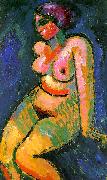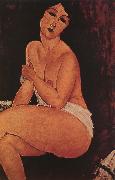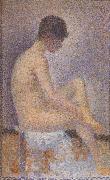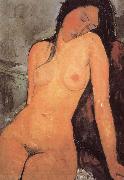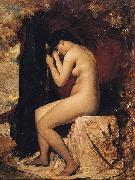Wholesale Oil Painting No Minimum |
|||||||||||
|
|
|||||||||||

|
|||||||||||
|
|
|
||||||||
Alexei Jawlensky1864-1941 Russian Alexei Jawlensky Galleries Alexej von Jawlensky was born in Torzhok, a town in the department of Tver, Russia, as the fifth child of Georgi von Jawlensky and his wife Alexandra (n??e Medwedewa). His family was aristocratic. At the age of ten he moved with his family to Moscow. After a few years of military training, he became interested in painting, visiting the Moscow World Exposition c. in 1880. In 1896 he moved to Munich where he studied in the private school of Anton Azbe. In Munich he met Wassily Kandinsky, and Marianne von Werefkin, other Russian artists and helped form the Neue Kunstlervereinigung M??nchen. His work in this period was lush and richly coloured, but later moved towards abstraction with a simplified and formulaic style in a search to find the spiritual. Alexej von Jawlensky. Abstract Head, c. 1928He died in Wiesbaden, Germany on 15 March 1941. |
||||||||
|
|
||||||||
Seated Female Nude
Seated Female Nude Painting ID:: 2060 |
1910 Lenbachhaus, Munich 1910 Lenbachhaus, Munich |
|||||||
|
|
||||||||
Amedeo ModiglianiItalian Expressionist Painter and Sculptor, 1884-1920 Amedeo Clemente Modigliani (July 12, 1884 ?C January 24, 1920) was an Italian artist of Jewish heritage, practicing both painting and sculpture, who pursued his career for the most part in France. Modigliani was born in Livorno (historically referred to in English as Leghorn), in northwestern Italy and began his artistic studies in Italy before moving to Paris in 1906. Influenced by the artists in his circle of friends and associates, by a range of genres and art movements, and by primitive art, Modigliani's œuvre was nonetheless unique and idiosyncratic. He died in Paris of tubercular meningitis, exacerbated by poverty, overworking, and an excessive use of alcohol and narcotics, at the age of 35. |
||||||||
|
|
||||||||
|
|
Seated Female Nude
Seated Female Nude Painting ID:: 53509 |
mk232
1917
Oil on canvas
180x62cm
mk232 1917 Oil on canvas 180x62cm |
||||||
|
|
||||||||
Georges SeuratFrench Pointillist Painter, 1859-1891 Georges-Pierre Seurat (2 December 1859 ?C 29 March 1891) was a French painter and draftsman. His large work Sunday Afternoon on the Island of La Grande Jatte, his most famous painting, altered the direction of modern art by initiating Neo-impressionism, and is one of the icons of 19th century painting Seurat took to heart the color theorists' notion of a scientific approach to painting. Seurat believed that a painter could use color to create harmony and emotion in art in the same way that a musician uses counterpoint and variation to create harmony in music. Seurat theorized that the scientific application of color was like any other natural law, and he was driven to prove this conjecture. He thought that the knowledge of perception and optical laws could be used to create a new language of art based on its own set of heuristics and he set out to show this language using lines, color intensity and color schema. Seurat called this language Chromoluminarism. His letter to Maurice Beaubourg in 1890 captures his feelings about the scientific approach to emotion and harmony. He says "Art is Harmony. Harmony is the analogy of the contrary and of similar elements of tone, of color and of line, considered according to their dominance and under the influence of light, in gay, calm or sad combinations". Seurat's theories can be summarized as follows: The emotion of gaiety can be achieved by the domination of luminous hues, by the predominance of warm colors, and by the use of lines directed upward. Calm is achieved through an equivalence/balance of the use of the light and the dark, by the balance of warm and cold colors, and by lines that are horizontal. Sadness is achieved by using dark and cold colors and by lines pointing downwards. |
||||||||
|
|
||||||||
|
|
Seated Female Nude
Seated Female Nude Painting ID:: 54157 |
mk235
c.1886/87
Oil on panel
25.4x16.2cm
mk235 c.1886/87 Oil on panel 25.4x16.2cm |
||||||
|
|
||||||||
Amedeo ModiglianiItalian Expressionist Painter and Sculptor, 1884-1920 Amedeo Clemente Modigliani (July 12, 1884 ?C January 24, 1920) was an Italian artist of Jewish heritage, practicing both painting and sculpture, who pursued his career for the most part in France. Modigliani was born in Livorno (historically referred to in English as Leghorn), in northwestern Italy and began his artistic studies in Italy before moving to Paris in 1906. Influenced by the artists in his circle of friends and associates, by a range of genres and art movements, and by primitive art, Modigliani's œuvre was nonetheless unique and idiosyncratic. He died in Paris of tubercular meningitis, exacerbated by poverty, overworking, and an excessive use of alcohol and narcotics, at the age of 35. |
||||||||
|
|
||||||||
|
|
seated female nude
seated female nude Painting ID:: 66375 |
mk289 1919 oil on canvas courtauld instirute galleries vnivaersity london london mk289 1919 oil on canvas courtauld instirute galleries vnivaersity london london |
||||||
|
|
||||||||
William Etty1787-1849 English William Etty Location English painter. Born into a Methodist family, he was the seventh child of a miller and baker in Feasegate, York, and in 1798 he was apprenticed as a printer to Robert Peck, publisher of the Hull Packet. Financial support from his uncle, a banker, allowed him to go to London in 1805, where he entered the Royal Academy Schools in 1806. For a year, in 1807-8, he was a pupil of Thomas Lawrence, who greatly influenced him. Following the death of his uncle in 1809 he became financially secure. From 1811 he exhibited regularly at the Royal Academy and the British Institution and in 1816 worked in the studio of Jean-Baptiste Regnault in Paris. |
||||||||
|
|
||||||||
|
|
Seated Female Nude
Seated Female Nude Painting ID:: 83522 |
1830s
Medium Oil on paperboard
Dimensions 68.6 x 52.7 cm
cyf 1830s Medium Oil on paperboard Dimensions 68.6 x 52.7 cm cyf |
||||||
|
|
||||||||
|
William Etty 1787-1849 English William Etty Location English painter. Born into a Methodist family, he was the seventh child of a miller and baker in Feasegate, York, and in 1798 he was apprenticed as a printer to Robert Peck, publisher of the Hull Packet. Financial support from his uncle, a banker, allowed him to go to London in 1805, where he entered the Royal Academy Schools in 1806. For a year, in 1807-8, he was a pupil of Thomas Lawrence, who greatly influenced him. Following the death of his uncle in 1809 he became financially secure. From 1811 he exhibited regularly at the Royal Academy and the British Institution and in 1816 worked in the studio of Jean-Baptiste Regnault in Paris. Seated Female Nude 1830s Medium Oil on paperboard Dimensions 68.6 x 52.7 cm cyf |
||||||||
|
|
||||||||
|
Prev Next
|
||||||||
|
|
||||||||
|
Related Paintings to William Etty :. |
||||||||
|
|
||||||||
|
CONTACT US |
